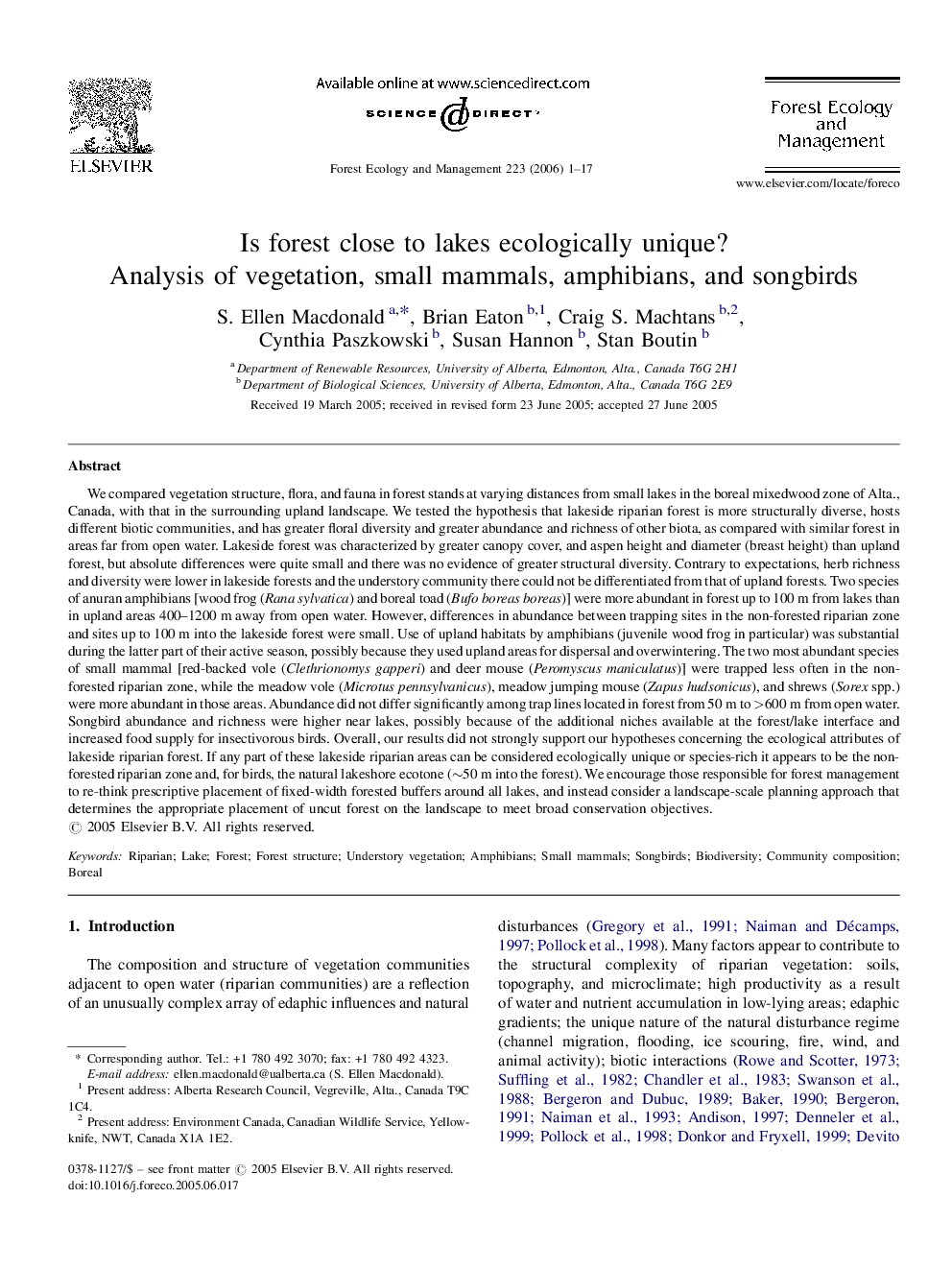| Article ID | Journal | Published Year | Pages | File Type |
|---|---|---|---|---|
| 90569 | Forest Ecology and Management | 2006 | 17 Pages |
We compared vegetation structure, flora, and fauna in forest stands at varying distances from small lakes in the boreal mixedwood zone of Alta., Canada, with that in the surrounding upland landscape. We tested the hypothesis that lakeside riparian forest is more structurally diverse, hosts different biotic communities, and has greater floral diversity and greater abundance and richness of other biota, as compared with similar forest in areas far from open water. Lakeside forest was characterized by greater canopy cover, and aspen height and diameter (breast height) than upland forest, but absolute differences were quite small and there was no evidence of greater structural diversity. Contrary to expectations, herb richness and diversity were lower in lakeside forests and the understory community there could not be differentiated from that of upland forests. Two species of anuran amphibians [wood frog (Rana sylvatica) and boreal toad (Bufo boreas boreas)] were more abundant in forest up to 100 m from lakes than in upland areas 400–1200 m away from open water. However, differences in abundance between trapping sites in the non-forested riparian zone and sites up to 100 m into the lakeside forest were small. Use of upland habitats by amphibians (juvenile wood frog in particular) was substantial during the latter part of their active season, possibly because they used upland areas for dispersal and overwintering. The two most abundant species of small mammal [red-backed vole (Clethrionomys gapperi) and deer mouse (Peromyscus maniculatus)] were trapped less often in the non-forested riparian zone, while the meadow vole (Microtus pennsylvanicus), meadow jumping mouse (Zapus hudsonicus), and shrews (Sorex spp.) were more abundant in those areas. Abundance did not differ significantly among trap lines located in forest from 50 m to >600 m from open water. Songbird abundance and richness were higher near lakes, possibly because of the additional niches available at the forest/lake interface and increased food supply for insectivorous birds. Overall, our results did not strongly support our hypotheses concerning the ecological attributes of lakeside riparian forest. If any part of these lakeside riparian areas can be considered ecologically unique or species-rich it appears to be the non-forested riparian zone and, for birds, the natural lakeshore ecotone (∼50 m into the forest). We encourage those responsible for forest management to re-think prescriptive placement of fixed-width forested buffers around all lakes, and instead consider a landscape-scale planning approach that determines the appropriate placement of uncut forest on the landscape to meet broad conservation objectives.
